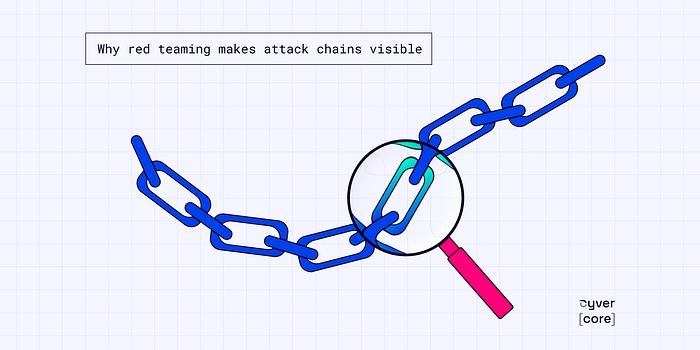Attackers rarely use one big exploit. They take small steps that connect. A weak password, a cloud misconfiguration, or an exposed endpoint can link together and give access to sensitive systems.
That sequence of steps is called an attack chain. It shows how different parts of your environment interact and how real attacks unfold. Red teaming helps you see that path clearly, before someone else does.
From Issues to Attack Paths
Traditional penetration tests help identify security issues. They give you a list of vulnerabilities, a severity rating, and recommendations. That's useful, but it doesn't always explain how those findings work together.
Red teams go deeper. They simulate how an attacker would actually move through your environment using the weaknesses already there. The goal is to understand what can happen when several small risks align — not just to confirm that they exist.
Why the Full Chain Matters
Every red team exercise follows a story. It starts with reconnaissance and initial access, then continues with lateral movement, privilege escalation, and persistence. Each stage reveals how systems, identities, and policies connect.
The more complex your infrastructure, the more hidden paths appear. Those paths often matter more than individual vulnerabilities. If you only test isolated issues, you don't see the real picture of how an attack could spread.
Measure Real-World Response
Red team exercises also show how well your organization detects and reacts to threats.
Can your SOC recognize suspicious privilege changes? Does your EDR notice when someone moves across systems? Does your team report a phishing email before credentials are stolen?
These tests measure readiness in real conditions. They show how your tools and people perform together when facing an actual scenario.
Turn Findings Into Action
Red teamers often spend weeks documenting every step of an attack simulation. The result is detailed, but sometimes difficult for internal teams to act on.
That's where Cyver Core comes in. We built it to make those stories clear and practical. The platform visualizes attack paths, connects vulnerabilities with identities and assets, and adds context to each step.
Instead of reading through pages of data, teams can follow a mapped chain, understand priorities, and plan the right response.
Break the Chain Before It Breaks You
When you understand your attack chain, you can focus your efforts where they matter most. Sometimes that means patching a service. Sometimes it means improving identity management or monitoring. Often, it's a combination.
Red teams uncover the chain. Cyver Core helps you analyze and act on it. Seeing how attacks could connect makes it easier to prevent them.
Want to see how Cyver Core helps visualize attack chains? Start a test project and explore how your red team findings turn into clear, actionable insight.

